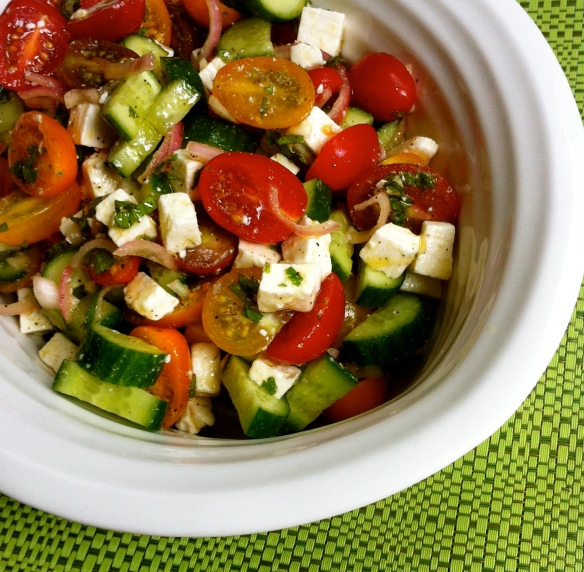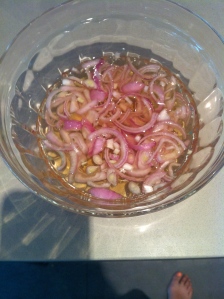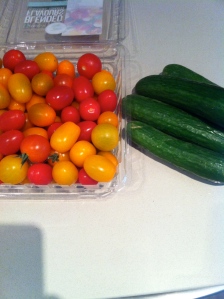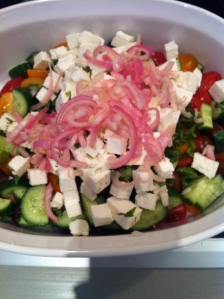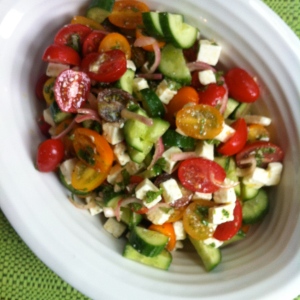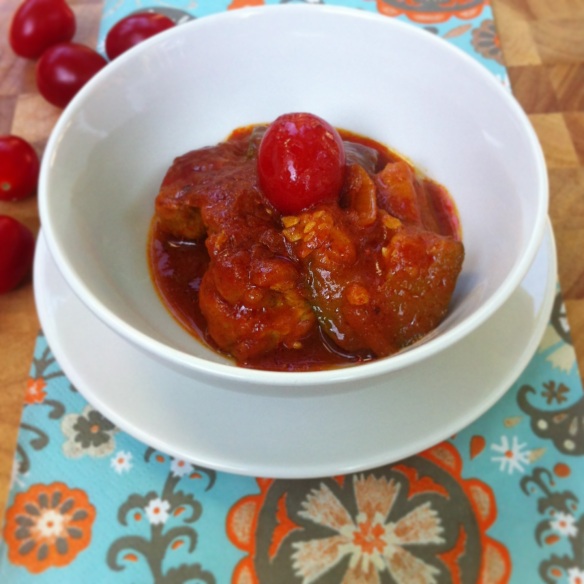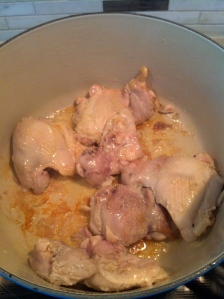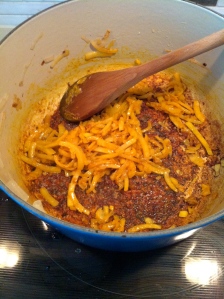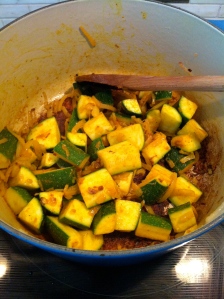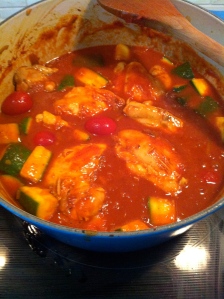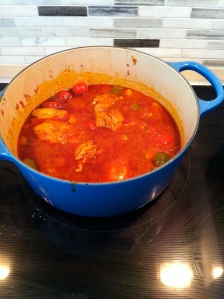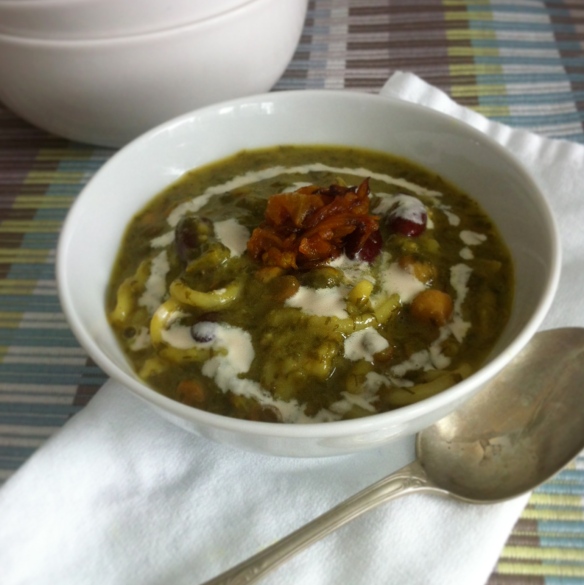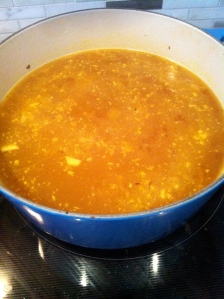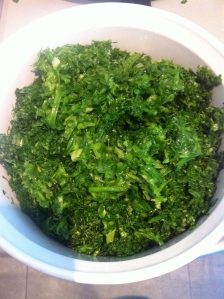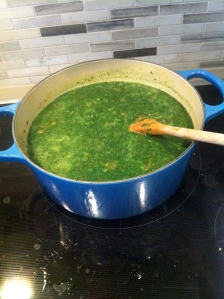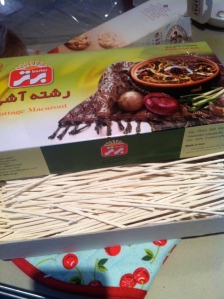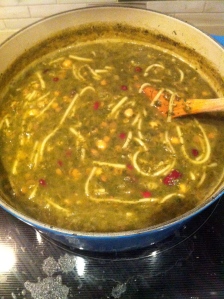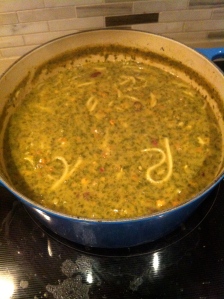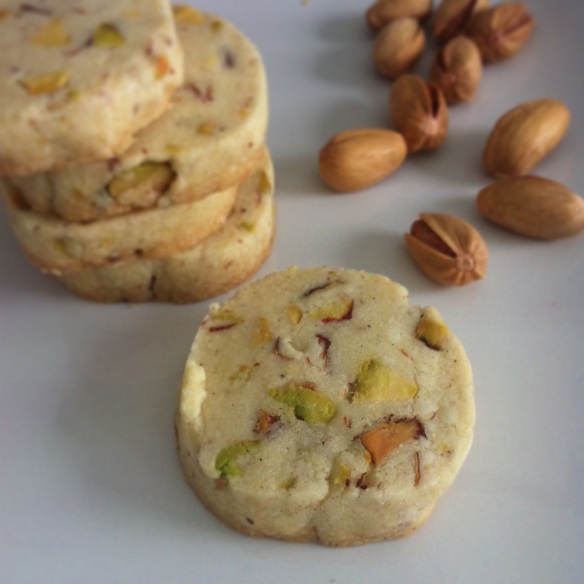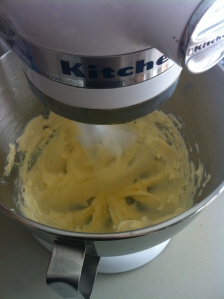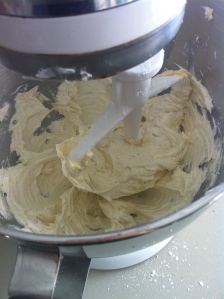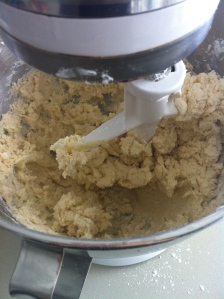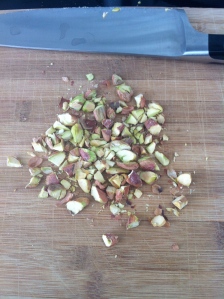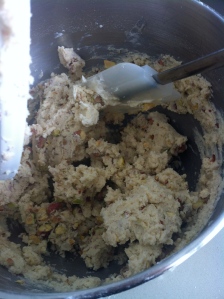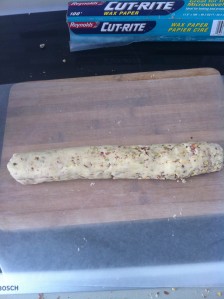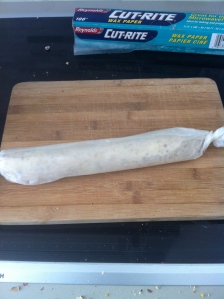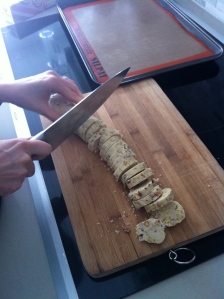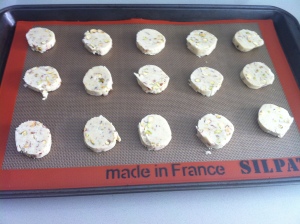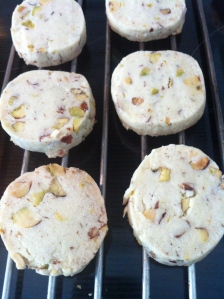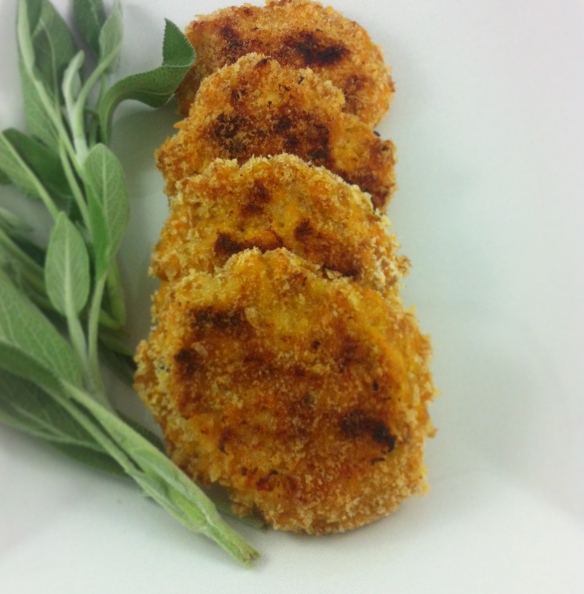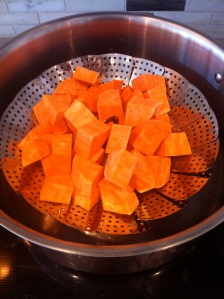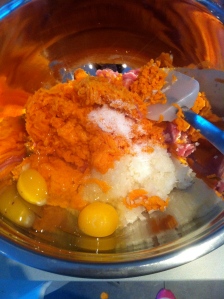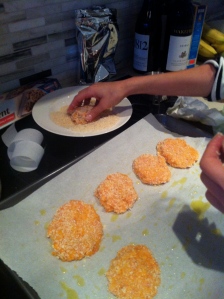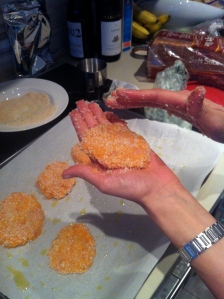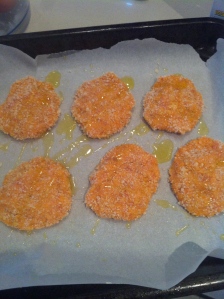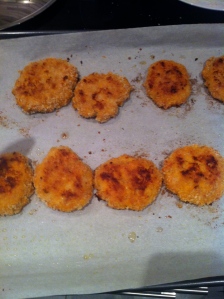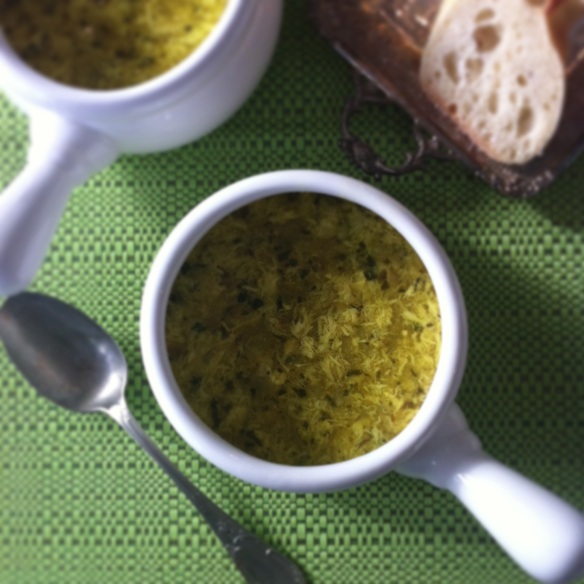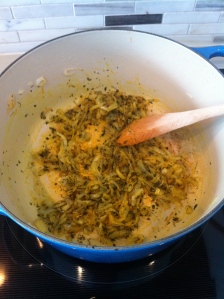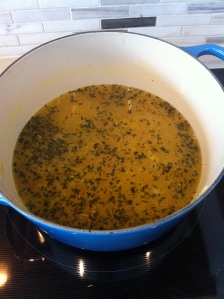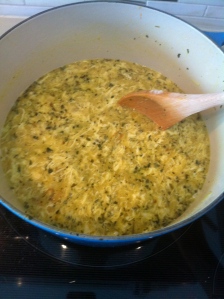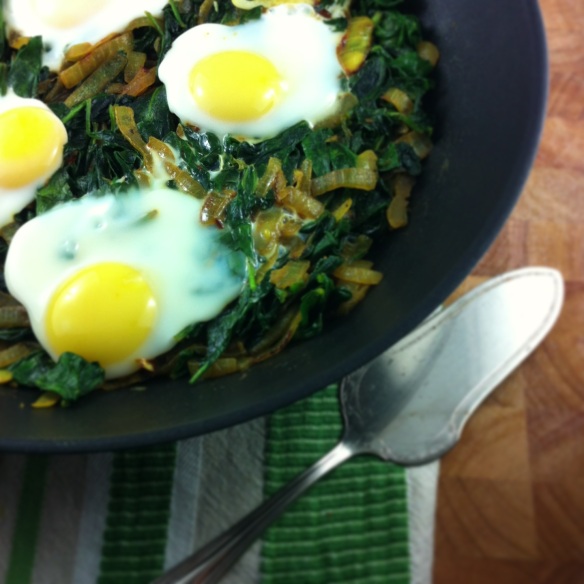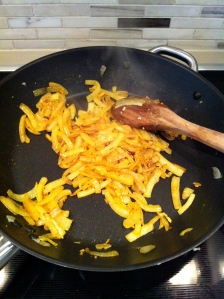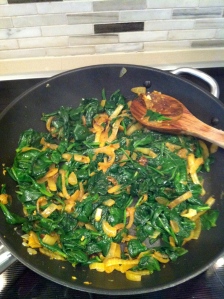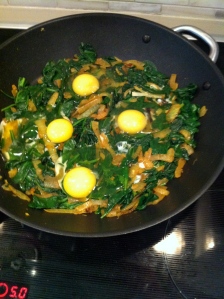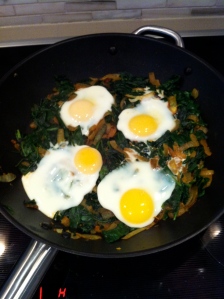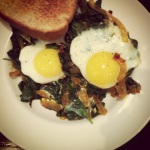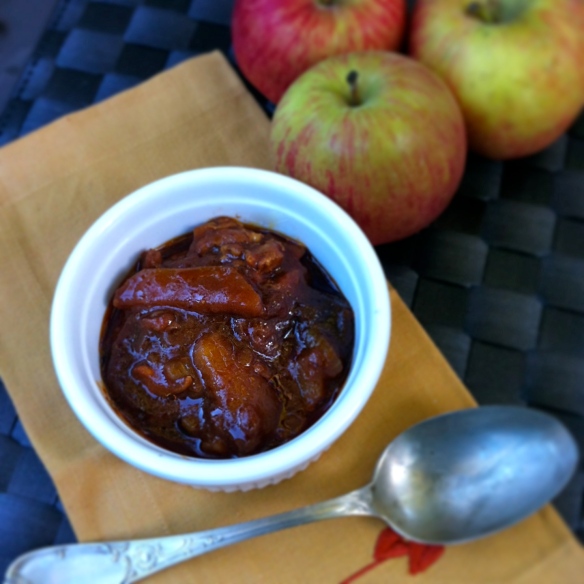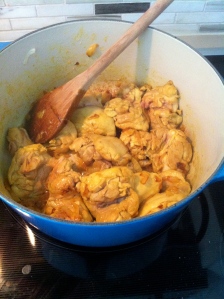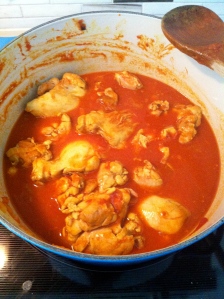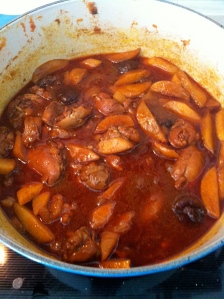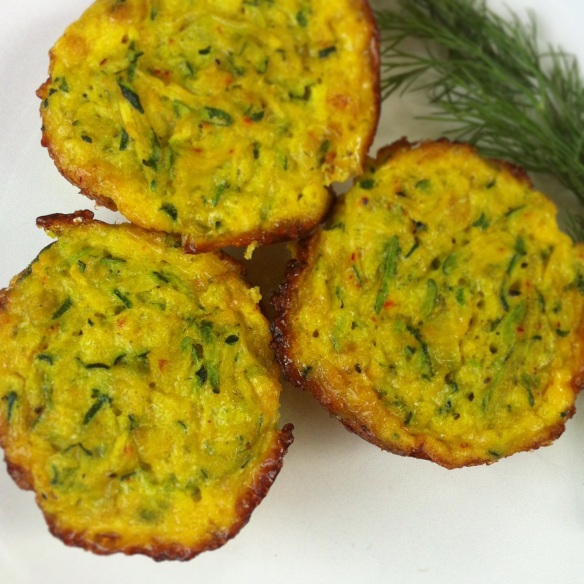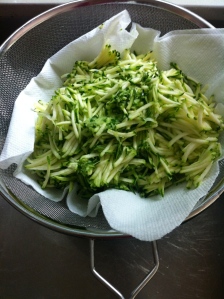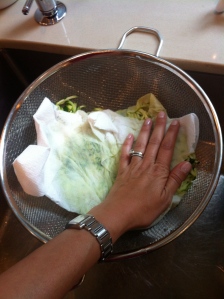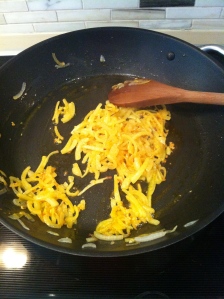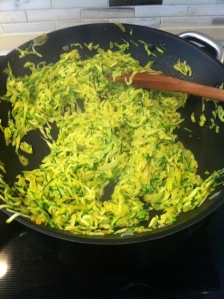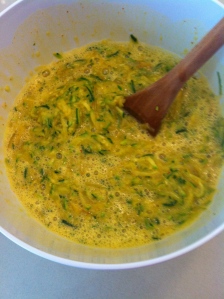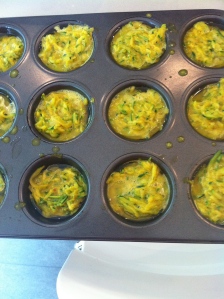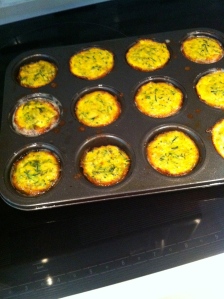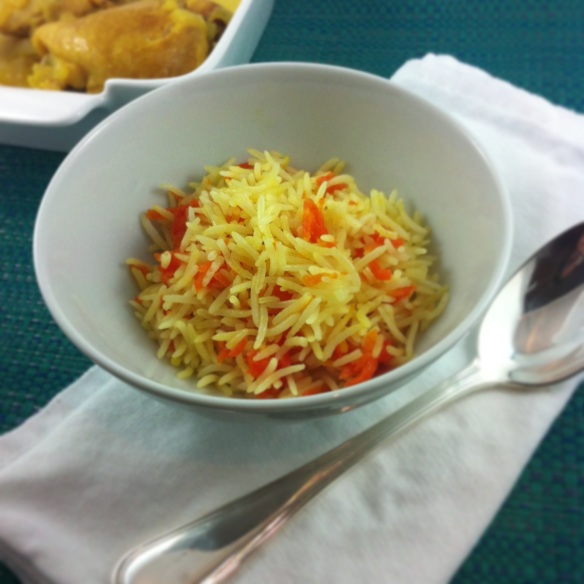
I have one culinary regret I have in my life…..I wish I had introduced Persian food to my daughter at an earlier age. I was a first time parent and so worried about strong flavours and exotic ingredients, that I don’t think I gave my little girl Persian food until after her second birthday. My poor daughter had a very bland (but healthy) diet up to that point….as a result, at five years old she still tends to prefer bland foods. Although she eats Persian food, she still sometimes asks if she can have her plain rice without “Farsi sauce”.
I vowed not to make the same mistake with my son and I’m proud to say that at 14 months he is a Persian food lover! I may go so far as to say that I think it’s his favourite cuisine. Havij Polo and Morgh-e Ab Pas was my son’s first taste of Persian food. Simple, delicious, aromatic and slightly sweet, I thought this dish was the perfect introduction to the spices that are common to Persian food. Since then, he has tried numerous Persian stew and rice dishes which he has happily gobbled up.
Havij Polo can be served on its own or as a side dish for any meat dish. Some people like to layer chicken within the rice during the cooking process, but I personally love serving Morgh-e Ab Pas (Persian Braised Chicken) on the side because I love pouring some of the flavourful braising liquid over my rice.
Havij Polo
(Serves 4)
2 cups basmati rice
4 tbsp butter
300 grams carrots (about 3-4), peeled and coarsely grated*
2 tbsp sugar
1/4 tsp ground saffron dissolved in 2 tbsp boiling water
canola oil
salt
braised chicken (recipe to follow)
In a medium non-stick frying pan, melt butter over medium-high heat. Add the grated carrots and fry for 3 minutes. Add sugar, 1/4 tsp salt and 1/4 cup water, bring to a boil and cook for another two minutes (most of the water will evaporate). Turn off heat and set aside.
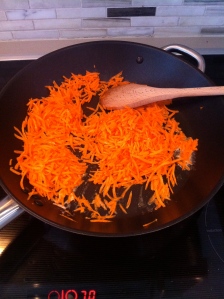
Wash as much starch off the rice as possible. To do this put the rice in a large bowl, cover with cold water and agitate with your hands. You will notice that the water will become milky. Drain the water and repeat. Keep doing this until the water is clear (about 4-5 times).
After the rice is washed, cover with 6 cups lukewarm water and 1 tsp of salt. Allow the rice to soak for at least 30 minutes (this step is optional, but the rice will be tastier and fluffier if you do it).
Fill a large non-stick pot ¾ full with water and 1 tbsp salt. Bring to a boil over high heat. Drain the soaked rice and add to the pot of boiling water. Turn down the heat slightly to medium-high (it should still be boiling) and boil for 6-10 minutes stirring occasionally. Make sure to taste the rice as you go along. When it is ready it should be soft but not mushy and over-cooked. It should be the texture of al-dente pasta. For me, I find that 6 minutes usually is enough.
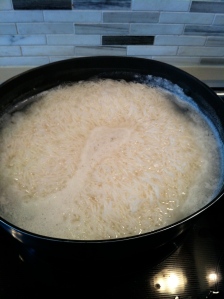
Drain the rice in a wire sieve.
Using a paper towel, dry your pot. Pour enough canola oil into your pot to just cover the bottom. Add the saffron water to the oil.
Using a spatula, add 1/3 of the rice to form a layer to cover the bottom of the pot and form the ta-dig (the golden rice crust).
Sprinkle half of the carrot mixture over the rice. Then layer another third of the rice on top and then the rest of the carrot mixture. Top with the last third of the rice. The layers should resemble sort of a pyramid.
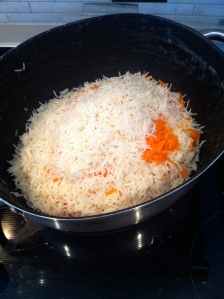
Using the handle of a wooden spoon poke three holes in the rice and pour over 1/4 cup water. Top with two tbsp butter. Cover and cook over medium-high heat for 10 minutes.
Turn down the heat to medium low and take a clean dish towel and cover the lid of the pot. Make sure that the lid is on tightly. Alternatively you can use a double layer of paper towel between the pot and lid. Let the rice steam for 40 minutes.
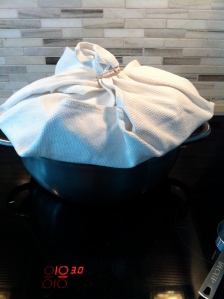
When the rice is ready, use a spatula to transfer the rice to a serving dish. Gently, mix the carrot and rice. Season with salt if necessary. Loosen the ta-dig with your spatula or a wooden spoon.
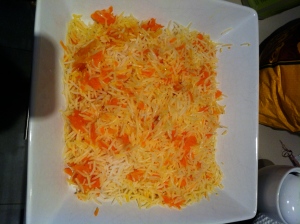
Serve with Morgh-e Ab Paz (recipe to follow) or Persian Roasted Saffron and Lemon Chicken.
*I grate my carrots in the food processor using the grating attachment. You may also cut the carrots in small match sticks if you prefer.
Morgh-e Ab Paz (Braised Chicken)
6-8 chicken thighs (bone-in and skin-on preferred)
1 large onion, thinly sliced
1 tsp salt
1/2 tsp pepper
1 tsp turmeric
Spread the onions on the bottom of a large heavy pot with a tight-fitting lid (I prefer a dutch oven). Put the chicken pieces on top of the onions. Sprinkle salt, pepper and turmeric on top and pour 1 cup of water over it. Bring to a boil over high heat. Turn down heat to medium-low and simmer for 45 minutes to an hour, turning the chicken over half way.
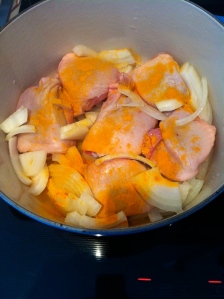
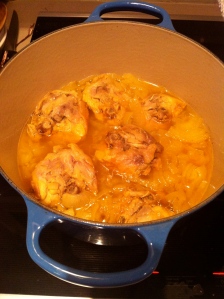
Serve the chicken and braising liquid with the rice. Enjoy!

